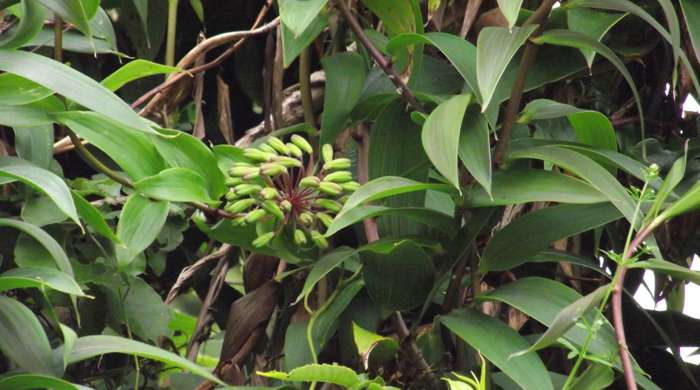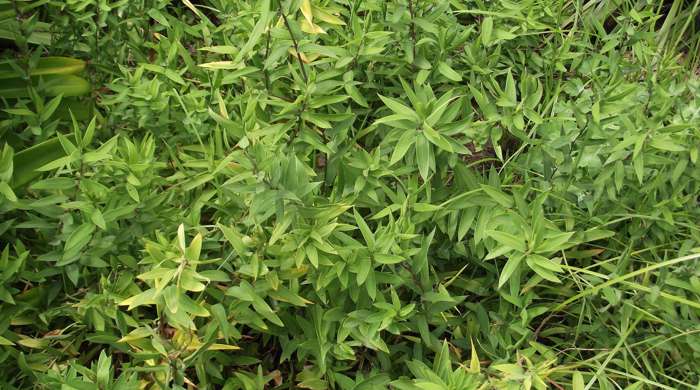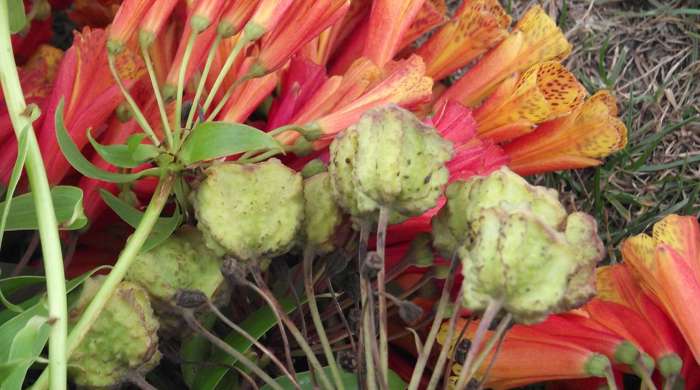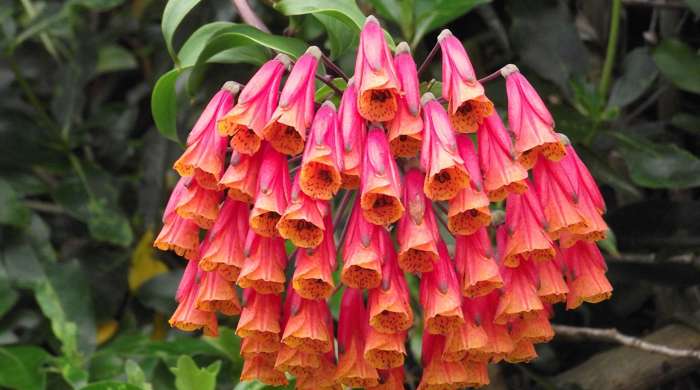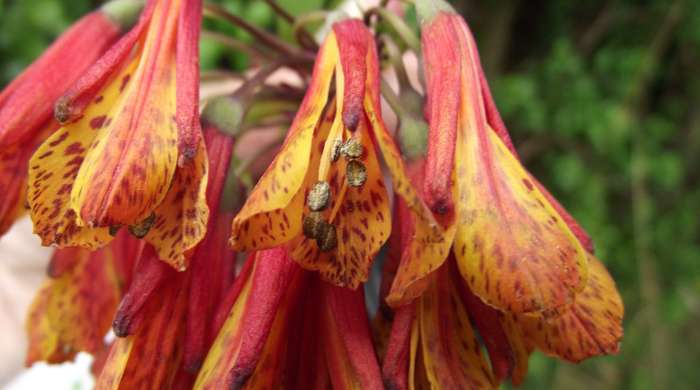Bomarea caldasii and B. multiflora
Bomarea
Also known as:
Bomaria, climbing alstroemeria
Family: Liliaceae
Origin: South America
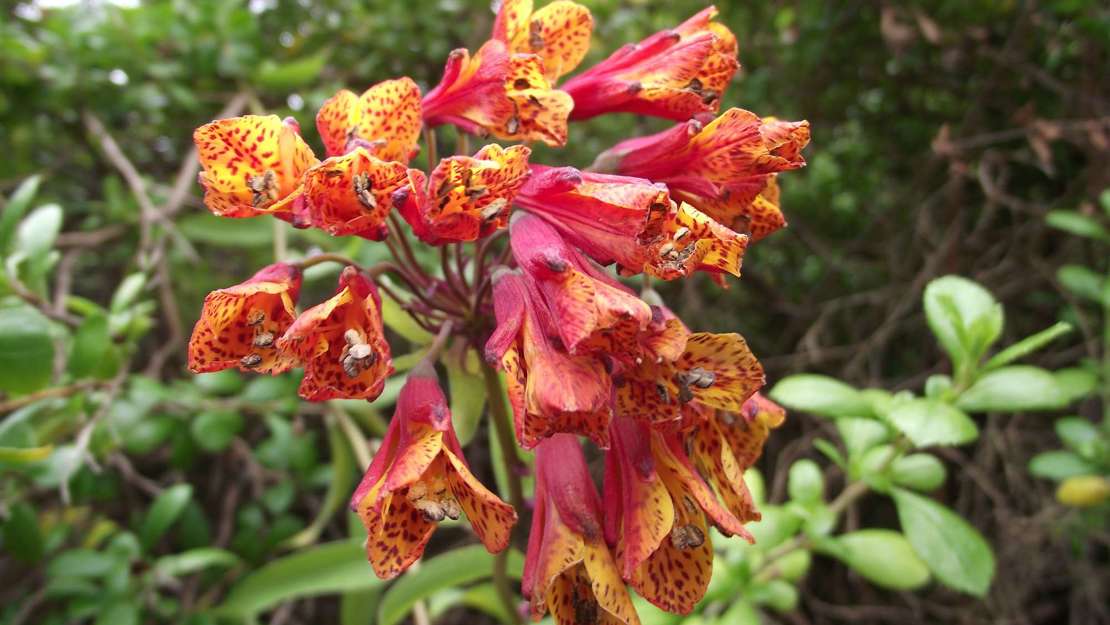
Regional Pest Management Plan (RPMP) status
- National Pest Plant Accord Species
- Whole region — Sustained control
General description
Multi-stemmed, perennial climbing vine. Leaves are thin, elongated, pale green and pointed. Flowers are tubular, red/orange/gold and hang in clusters from summer – winter. Fruit is fleshy, round, bright orange, and borne in May – August.
What you need to know
To help protect our environment:
- You must not breed, distribute, release or sell bomarea. As bomarea is a National Pest Plant Accord species, these restrictions apply within the Auckland region and across the whole of New Zealand.
- You must not plant bomarea within the Auckland region, unless you are transferring an existing plant on your land to another location within the boundaries of the same property.
- You must destroy any bomarea on land that you occupy if it has been planted in breach of the above rules and you are directed to do so by an authorised person.
Habitats
Disturbed forest, forest margins, lake and riparian margins, shrubland.
Dispersal
Seeds dispersed by birds. Vegetative spread from rhizomes and tubers.
Impact on environment
Smothers native vegetation and prevents seedling establishment, altering successional recruitment. Can cause dermatitis or allergic reactions.
Control
Site Management
Follow up treated areas 3 times per year. Encourage natural regeneration of native plants or replant treated areas where possible after 2-3 treatments to establish dense ground cover and minimise reinvasion.
Recommended approaches
Physical control
Method: Dig out.
Plant parts requiring disposal: Seeds, rhizomes and tubers.
Disposal options: Remove to greenwaste or landfill.
Biocontrol
Biocontrol is currently not available for this species.
Community agrichemical control recommendations
No qualifications: Cut stump and paste freshly cut base of stems with double strength glyphosate gel or cut stump and spray freshly cut base of stems with 250ml glyphosate green per 1 L of water. Cut back and foliar spray regrowth with 20ml glyphosate green per 1L of water.
Certified Handler/Experienced agrichemical user: Cut back and foliar spray regrowth with 200ml glyphosate green per 10L of water and 20ml penetrant.
Caution: When using any herbicide or pesticide please read the label thoroughly to ensure that all instructions and safety requirements are followed.
